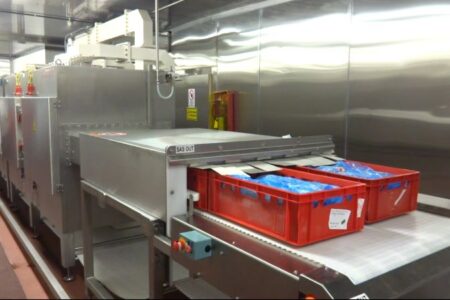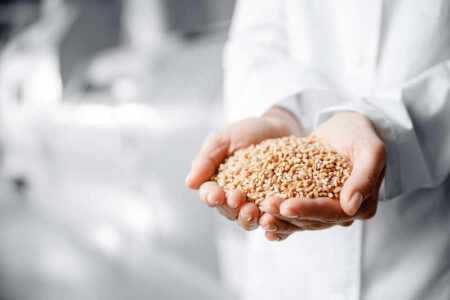Cutting portions, cutting costs

Snacking may have received bad reviews in recent decades, but all that is changing with consumers adopting a more balanced and healthy approach to mini-meals. Consumers crave convenience and are migrating away from ‘big is better’.
There are many drivers behind the single-serving boom. Singleton suppers, dashboard dining and deskfasts are some of the many phrases that encapsulate this generation’s eat-on-the-go mindset. Longer shelf life and a desire to not waste money on food that will go out of date is also steering consumers towards smaller portions.
Two-in-one
There are two elements to consider when processing single portion snacks and meals – product weight and potential food contaminants. A combined checkweigher and metal detection system is typically 30 per cent cheaper than buying two individual systems, highlights Tony Bryant, UK sales manager at Loma Systems.
Aside from maintaining product integrity, food remains an ever-expensive commodity. According to DEFRA’s Food Pocket Book, UK food prices rose 22 per cent between January 2007 and May 2013. That’s ten per cent more than in Germany and nine per cent higher than France. Average EU food prices rose by 17 per cent.
“Legislation protects consumers against short measures, and rightly so,” exclaims Bryant. “However, this puts even greater pressure on food producers to accurately measure their products and ensure that prices and weights are correct.” These EU regulations recognise that there are inherent fluctuations in the automatic packing process, providing for tolerances on small weight variations. Nevertheless, these need to be strictly enforced by manufacturers.
With fresh meat perceived to be one of the priciest of food commodities, Bryant uses this to illustrate today’s advanced checkweighing technology. “Traditionally, meat cuts were sliced to a specific size rather than packed to a particular weight. For modern retailers, pricing each component individually is not efficient. That’s why many food manufacturers with fast production line are migrating to automatic checkweighing.”
Product trust
Loma’s CW3 Checkweigher series can easily meet belt speeds of up to 120m per minute, making them ideal for high volume food producers. These machines work by inspecting each pack and calculating and verifying the average weight for a given batch size. To help protect gross margins and minimise waste, an independent rejection function is built into all of Loma’s Checkweigher systems, which means that any product that’s off-weight can be repacked and reused.
Product trust naturally aids consumers making impulse snack purchases. Contaminant detection is especially critical when preparing single portions, explains Bryant. “Whether you are packing chopped fruit and vegetables into resealable pouches or slicing up a quiche or cheesecake into ‘picnic-ready’ portions, the actual process of cutting product into portions introduces another potential contaminant into the food chain – metal fragments from the industrial process, for example slicing or mincing.”
Loma customer Anthony Rowcliffe opted for Loma’s variable frequency IQ3 Metal Detection system to inspect its range of artisan cheeses. Individually hand-cut with a cheese wire, Loma provided a machine that was sensitive enough to identify the smallest metal contaminants. “A key advantage of today’s metal detection technology is its advanced electronics,” says Bryant. “For example, the variable frequency of the IQ3 means that the machine automatically recalibrates to the moisture levels, salt content, density and size of each product. It gives food manufacturers greater flexibility and is more cost efficient, as one machine can inspect products from multiple lines.”
With a combined checkweighing and inspection system, the metal detector will typically be placed at the end of the line after the food has been prepared, packed, sealed and labelled.



